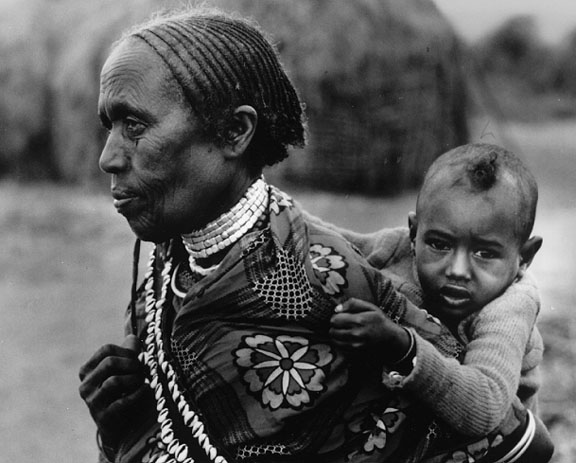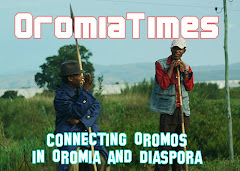
The ‘Federal Democratic Republic Ethiopia’ is not federal but tyrannically monolithic; is not democratic but dictatorial; is not a republic but a medieval relic; and more importantly, is not Ethiopia but Abyssinia.
Duplicity and brutality are the two axes of the local political game that mixes misinterpretation of History and usurpation of other countries’ names with extrjudicial killings, death squads and sinister underdevelopment.
For the tyrannized Kushitic Sidamas, it is essential to outmaneuver the administrative trick by which no particular adminsitrative zone is ascribed to them, as they confusingly regrouped within a nonsensical “Southern Nations Nationalities and People’s Region”. Sidama intellectual Wolassa Kumo, Ph.D. candidate in Economics, analyzes why. His insightful should become matter of urgent concern for democratic governments, NGOs, political activists and humanists all over the world.
The Sidama Regional Question and the Double Standards
By Wolassa Kumo
When one reads the official name Federal Democratic Republic Ethiopia, one thinks that the country is a federation of monoethnic or multiethnic regions. In practice, however, Ethiopia is a unitary state with a very strong federal constitution.
By reading it, you think that the constitution is truly radical, as it stipulates the right to self-determination for every nation and ethnic group in the country, including even the possibility of secession!
However, over the past 16 years, there has not been evidence that any region in the country was able to make an autonomous decision of regional significance without the interference of the central government, let alone demand secession from the country.
Personally, I am neither an advocate of secession nor the supporter of any unity that does not accommodate diversity. My concern is focused mostly on the unwitting or intentional infringement of these constitutional rights of the Sidama people in Ethiopia.
What is Federalism?
The true federalism refers to a system of government in which sovereignty is constitutionally divided between a central ruling authority and various constituent political units, such as states or provinces. In this system, the power to govern is shared between the national and regional levels, helping form what is often called a federation. In a federation, the self-governing status of the component states is typically and constitutionally entrenched; it cannot be altered by a unilateral decision of the central government
However, in Ethiopia talking about federation is a mockery for the following reasons:
First, regional arrangements are not based on the will of the people. This is particularly true in South Ethiopia where 45 heterogeneous ethnic groups have been amalgamated by force. The 5 independent regions in the South were dismantled by the unilateral decision of the current Ethiopian regime in 1993. This in itself defies the basic criteria of federation.
Second, regions reflecting uniformed representation of an ethnic group or people have no real power. The elected and experienced representatives of various people are usually purged out, and inexperienced, unelected, hand-picked loyalists are peremptorily instituted as ‘the representatives’ of the ethnic group or people in the region in question. Consequently, federalism does not exist in ‘Ethiopia’.
Even if we assume that federal arrangements exist throughout the country with the exception of its southern part, the federal arrangement is asymmetric in the sense that some regions have been given more power, although the constitutional status of all regions is the same.
As a matter of fact, examining several federal European states such as Germany and Switzerland, we realize that the regional administrations have been often given decision making power greater than that of the national government. This is usually referred to as a ‘strong federalism’. In a federal system of government, the component regions are regarded as in some sense sovereign, in that certain powers are reserved to them, and may not be exercised by / transferred to the central government.
Likewise, the constituent regions / parts of a federation usually possess no powers in relation to foreign policy, which is reserved to the national government. Such separation of power between regions and the national government does not exist in ‘Ethiopia’.
The contemporary Public or Social Choice Theory, formulated in the form of various economic models such as constrained utility maximization, game theory, and decision theory, supports the idea that federalism helps secure Democracy and Human Rights. There are several countries in the world that follow true federal systems of governments. It is often argued that the infringement on civil liberty is minimal in countries whereby constituent regions exercise greater autonomy in the decision making procedures.
Even countries that abide by unitary constitutional concept have come to terms with the aforementioned socio-political trends, and currently provide more rights to their constituent regions; in striking opposition to them, the so-called federal government of ‘Ethiopia’ denies any right to the various constituent regions and their ‘citizens’.
Countries such as Spain and UK do not follow federal arrangements on papers but provide their component states with a greater degree of autonomy.
In the People’s Republic China, a form of de facto federation has evolved without formal legislation. This has occurred by means of gradual, largely informal, power transfer to the provinces; it was geared to let them handle economic affairs and implement national policies. This has resulted in a particular system that some analysts have coined as "de facto federalism with Chinese characteristics".
In fake ‘Ethiopia’, Federalism means Tyrannical Trickery.
“Federal” arrangements in ‘Ethiopia’ are all based on land demarcation according to the ethno-linguistic identity of the inhabitants; it actually ended up to be a provocative case of brutal ethnic discrimination. As a matter of fact, the country has been composed out of 8 ethnic-based regions, two city-states, and one non-ethnic based region called ‘Southern Nation, Nationalities and Peoples’ Region’.
Yet, the constitutional approach identifies as federal administrative basis and cell the ethnic groups or peoples - not the regions! The constitution provides the ethnic groups and peoples with rights, and this directly translates to the ‘rights of regions’ where the stated peoples and ethnic groups live.
In this sense, the constitution at least nominally guarantees the rights of ethnic groups and peoples; and there are no less than 45 ethnic groups and peoples in South Ethiopia!
According to a common hearsay, an influential member of the current regime, originating from the north, told once a diplomat that “in the South there are too many peoples. That is a lot of mess. The only solution is to put them together”. Happy to hear that the person was short of suggesting Hitler’s total solution!
The Sidamas in the Path of Autonomy and Independence
The Sidama people have always complained with the federal government that their Human and Democratic rights, and more particularly their right to self-administration, have been denied because their regional status has been downgraded through their forced incorporation into the Southern Nations Nationalities and People’s Region which consists – as we already said - of 45 ethnic groups.
In spite of their sizeable population and remarkable economic contribution to the central government that, viewed proportionally, surpasses that of most of the other so-called ethnic based regional provinces, the Sidamas have been constantly, methodically, and overtly mishandled by the discriminatory authorities of the federal government.
The double standards applied within the ‘Ethiopian’ political system can be clearly shown by the following statistics thanks to which we can understand that regional arrangements have not been based on any objective criteria.
Sidamas total an estimated population of 3 million people, according to the Central Statistical Authority of Ethiopia. This is a fallacious figure that has been categorically denounced by the democratic Sidama political parties and organizations, who authoritatively pinpoint that the total Sidama population is around 5 million people. To make some illuminative comparisons, the Sidamas outnumber either the Norwegians or the Croatians. Independent, the Sidama Land would be 115th among 235 listed countries ranked according to their population number.
However, even if we take into consideration the forged data provided by the tyrannical ‘federal’ authorities, Sidamas’ total population exceeds that of 6 out of the 11 independent regions in Ethiopia.
According to the same – erroneous - estimation, the Sidamas consist in the 5th largest ethnic group in Ethiopia, after the Oromos, the Amharas, the Ogadenis and the Tigrays.
However, Meles Zenawi’s tyrannical regime keeps provocatively and inhumanely denying to an entire people their legitimate right to regional status within the Ethiopian administration.
I, personally, had once the experience to hear an authoritative source confirm that Meles Zenawi himself agreed to grant Sidamas regional status in a meeting with 100 Sidama elders summoned to his palace after the May 2005 elections. However, soon after he told the same elders that he changed his mind. One should remind the most loathsome African tyrant that ‘regional status’ for the Sidamas – as for any other people – is a right, not a privilege.
Illuminative Statistics
As we can see from the statistical data, other ethnic groups that are less populous enjoy a relative benefit of regional representation not because, the current regime in Ethiopia truly wanted to respect their basic right but due to their geopolitical conditions that forced the Abyssinian regime to do so.
Smaller ethnic groups, except the Ogadenis, have been granted regional status because, as they are located at the borders, the probability of them demanding secession would be very high, if they were incorporated into “western” or “eastern” peoples’ regions. The double standards in the Ethiopian political system are surely unbearable. Decisions on peoples’ rights are made - not based on any objective criteria but - on conjunctures and opportunism. When situations are suitable for the government to deny any basic rights, a people may be denied all of them . This is precisely what has been happening to Sidamas over the past 16 years.
The provisions in the constitution as regards the right to self-determination of peoples and ethnic groups in this totalitarian country are reminiscent of George Orwell’s ‘constitutional rights in the Animal Farm’: “all animals are equal; but some animals are more equal than others”.
Ethiopia’s Regions and Population as of 2005
Name of region---Total population---Regional status----Remarks
Oromia-------------26,553,000----------Yes-------Majority ethnic group
Amhara------------19,120,005----------Yes-------Second ethnic group
Ogaden-------------4,329,001-----------Yes-------Demanding autonomy
Tigray--------------4,334,996-----------Yes
Sidama*------------3,000,000-----------NO!!-----Demanding regional status
Afar-----------------1,389,004------------Yes------Border Eritrea/Djibuti
Benishangul-Gumuz---625,000------Yes-------Border Sudan
Gambela-------------247,000-----------Yes-------Border Sudan
Harari----------------196,000-----------Yes-------Adjacent to Oromia
SNNPR-----------14,901,990---------Forged region
“Addis Ababa”**---2,973,004----City – State / Finfinne being its true name
Diredawa**----------398,000-------City state-----Claimed by Oromia
*Sidama is under SNNPR. The population figure is rounded from over 2.95 million. This excludes the pollution of other Sidamas such as Alaba, Xambaro, Qewena and Maraqqo.
** Addis Ababa and Diredawa are city regions.
Source: Central Statistical Authority of Ethiopia, 2005 Publication.

American Chronicle

















No comments:
Post a Comment